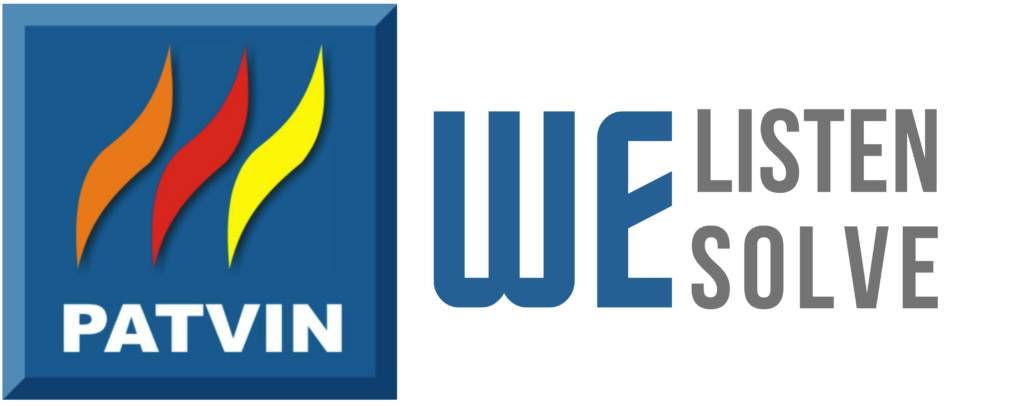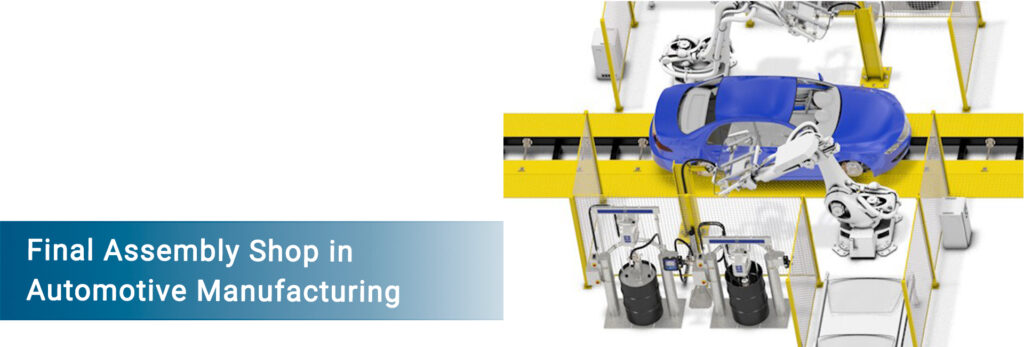Automation continues to be adopted in the manufacturing industry as a strategy to improve the accuracy, speed, and quality of the finished products at the stage of final assembly. In challenging manufacturing sectors such as automobile assembly, automation delivers a significant impact in areas such as fluid management, material deposition, and system validation.
This ensures that the final product meets a high standard of safety, reliability, and performance. In this article, we explore how automation is used in the assembly line with a focus on fluid handling and material product application.
Why Automation in the Final Assembly?
It is the last process in the manufacturing process, where subassemblies and components are joined together to form a complete product. This phase also calls for high levels of material and process control considerations such as fluid filling and adhesion. Manual handling can result in errors, inefficiencies, and extended production times. Automation addresses these issues by performing high-precision, repetitive tasks with minimal human intervention, enhancing speed, quality, and consistency.
In industries such as automotive manufacturing, where safety and efficiency are key, automated solutions can guarantee that Final Assembly Results have been developed to safe standards and provide a solid return while increasing the efficiency of the production line.
Key Areas of Automation in Final Assembly
Fluid Handling Systems
Fluid Handling is an essential element in vehicle production, especially in automobile manufacturing Companies. Patvin’s liquid-injection systems ensure the metering and filling of several systems, such as
- Power steering system
- Windshield fluid system
- Brake oil system
- Clutch oil system
- Diesel exhaust fluid system
These industrial automation machines are designed to be compliant with certain standards in the industry while having added functionalities such as heating, nitrogen pressure testing, and recovery systems. In addition to achieving consistency in fluid management, automation also enhances the rate of filling processes, ensuring general productivity. Learn more.
Leak Testing and Quality Assurance
Leak testing plays a significant role in ensuring that every part of the automobile meets the right safety and performance requirements. Some AC circuit and brake oil circuit testing machines manufactured by Patvin assist automobile producers in detecting which of the circuits has leaked at a very high level of precision.
These leak testing systems employ gasses such as nitrogen and dry air for precise testing while incorporating data acquisition to track the outcome and quality control of products. Using automation in leak testing, manufacturers are able to maintain a high degree of safety without compromising on defects.
Adhesive Application and Gluing Systems
Adhesive application is another area where automation significantly impacts the final assembly process. For instance, with the applications of robotics, Patvin’s glass gluing systems ensure that the glass adheres firmly to the vehicle body in the right manner.
The system not only focuses on enhancing the durability but also on the appearance of the vehicle. Automated gluing systems keep human mistakes to a minimum, thus enabling manufacturers to perform bonding and sealing perfectly in assembly lines. Moreover, by automating adhesive application, wastes are minimized, and this leads to cost reduction while keeping the whole process eco-friendly.
Benefits of Automation in Final Assembly
Precision and Accuracy
The automated system provides the highest level of accuracy in the assembly line. For example, Patvin’s coolant filling machines guarantee that the electric vehicle radiator coolant and battery cooling circuits are filled with the right quantities of fluids to prevent human mistakes from occurring.
This consistency is accurately reflected in other fluid-handling tasks, such as brake oil and power steering oil filling, guaranteeing that each part in the finished product is first-rate and improves the dependability of the end product.
Increased Efficiency
Industrial automation is very efficacious in improving production by accomplishing tasks more quickly than manual methods. For example, Patvin’s brake oil filling machines efficiently fill brake oil and feature ABS modulator valve actuation, reducing the complexity of this process.
Similarly, machines used for oil filling in cab tilt mechanisms and power steering systems minimize downtime. This simply improves efficiency across the assembly line without sacrificing the quality of the output.
Reduced Labor Costs and Enhanced Safety
The automation of activities such as coolant filling and AC gas charging helps manufacturers minimize cases of handling dangerous fluids and glasses; this, in turn, makes the working environment safer for every employee.
Machines carry out such dangerous tasks, reducing labor costs as fewer workers are needed for manual tasks. However, they can be reallocated to other tasks, such as supervising system operations and general production management.
Consistency and Quality Control
During the final assembly, the use of automation guarantees quality output for each product. For instance, the windshield fluid filling and the engine oil filling machines used by Patvin ensure that the right amount of fluid required is dispensed to avoid product defects.
Additionally, automated systems can store and monitor production data. Such data acquisition in analyzing fault diagnosis allows for continuous quality control and rapid problem resolution across the assembly line.
Customization and Flexibility
Automation gives the advantage of customizing systems depending on the production requirements. Patvin’s filling machines, for example, come with customization options like barcode scanner integration and peripheral connectivity.
This lets manufacturers adapt the equipment for various vehicle models and assembly line setups. Whether for small-scale production or high-volume assembly, automated systems can be configured to fulfill numerous aspects of manufacturing needs while also ensuring quality.
Conclusion
Automation in final assembly is predicted to be even more vital as industries continue to adopt new technologies that enhance efficiency, accuracy, and safety. This includes fluid handling systems, surface treatment systems, spray applications, and coating applications, all of which provide manufacturers with the means of dealing with an up-and-coming market.
Particularly, data acquisition, fault diagnosis, and the use of customization options are all integrated into automated systems, thus making them a strong addition to the overall manufacturing process by improving both product quality and operational efficiency.
If you’re looking to streamline your final assembly processes, Patvin offers innovative automation solutions tailored to meet your specific manufacturing needs. Whether it’s fluid handling, adhesive application, or leak testing, our advanced systems ensure precision, efficiency, and reliability. Contact Patvin today to learn how our industrial automation solutions can elevate your production line to the next level.
FAQs
Automation enhances precision, efficiency, and quality in the final assembly process by reducing human error, increasing production speed, and ensuring consistency across all products.
By automating tasks that involve hazardous materials, such as coolant and brake oil filling, automation reduces worker exposure to dangerous substances, improving workplace safety.
Yes, automated systems like Patvin’s filling machines can be customized to meet the specific requirements of different assembly lines, offering flexibility in production setups.



